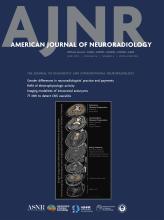Case of the Week
Section Editors: Matylda Machnowska1 and Anvita Pauranik2
1University of Toronto, Toronto, Ontario, Canada
2BC Children's Hospital, University of British Columbia, Vancouver, British Columbia, Canada
Sign up to receive an email alert when a new Case of the Week is posted.
May 23, 2019
Clear cell meningioma
- Background
- Clear cell meningioma is a rare, histologic subtype of meningioma (WHO Grade II).
- It is characterized by aggressive behavior and high potential for relapse, which may occur in up to 61% of patients after surgical treatment, despite the bland histologic appearance of the tumor.
- Clinical Presentation
- It has been described mainly in younger patients (age: 22 months to 67 years), with a mean age of 29.8 years old.
- A slight majority of cases have been described in females, without a definitive sex predilection.
The intraspinal location is especially common (48% of cases described with this histological pattern), followed by the posterior fossa and cerebral convexities. - The main symptom is localized back pain and radiculopathy in 83% of cases, as well as decreased muscle strength with paresis or plegias, hypoesthesia, paresthesia or anesthesia, altered osteotendinous reflexes and sphincter incontinence.
- Gait abnormalities are common in children, and in 11% of the cases scoliosis may be present.
- Key Diagnostic Features
- The features of spinal clear-cell meningiomas are similar to classic meningiomas in terms of location (extramedullary intradural), signal intensity (isointense to spinal cord on T1 and iso or slightly hyperintense on T2 weighted imaging, with intense and homogeneous enhancement).
- A dural tail may also be present. Accompanying leptomeningeal enhancement (although not present in this case) has been reported to be suggestive of clear-cell meningioma.
- Differential Diagnosis
- Schwannoma: No dural tail, may have associated hemorrhage, cyst formation and fatty degeneration, with heterogeneous enhancement.
- Ependymoma: Commonly well-circumscribed and intramedullary in location, centrally located within the spinal cord, with haemorrhage and haemosiderin staining (haemosiderin capping), and heterogeneous contrast enhancement.
- Astrocytoma: Intramedullary, but eccentric within the spinal cord, ill-defined, longer segment, heterogeneous contrast enhancement, cystic change may be present (difficult to differentiate from syringomyelia).
- Classic meningioma: Difficult to distinguish based solely on imaging characteristics, however leptomeningeal enhancement may suggest clear cell meningioma.
- Treatment
- The therapeutic goal is complete resection.
- The overall recurrence rate is 60.9%; the recurrence rate of intracranial clear-cell meningioma is 80%, whereas that of spinal clear cell meningioma is 46% within 5 years.
- Radiosurgery and radiotherapy have been considered as treatment options in recurrent disease.











